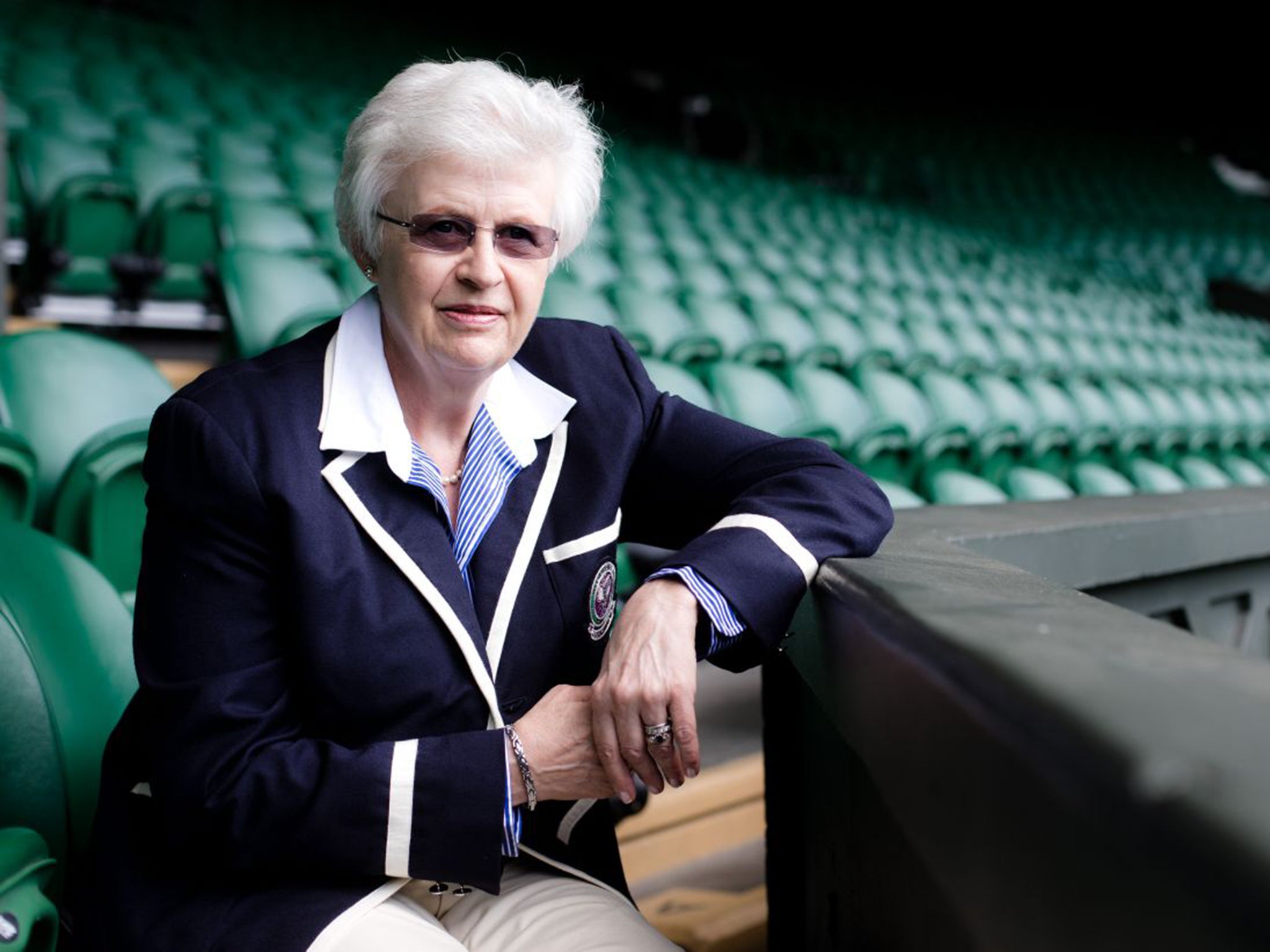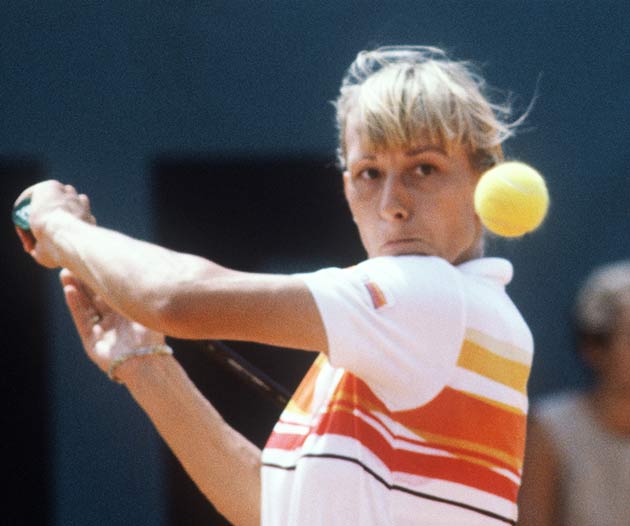Wimbledon 2015: Jenny Higgs on how 'a thick skin and a cool head' helped her to succeed as the tournament's first female chief umpire
The 68-year-old first umpired at Wimbledon 50 years ago

Your support helps us to tell the story
From reproductive rights to climate change to Big Tech, The Independent is on the ground when the story is developing. Whether it's investigating the financials of Elon Musk's pro-Trump PAC or producing our latest documentary, 'The A Word', which shines a light on the American women fighting for reproductive rights, we know how important it is to parse out the facts from the messaging.
At such a critical moment in US history, we need reporters on the ground. Your donation allows us to keep sending journalists to speak to both sides of the story.
The Independent is trusted by Americans across the entire political spectrum. And unlike many other quality news outlets, we choose not to lock Americans out of our reporting and analysis with paywalls. We believe quality journalism should be available to everyone, paid for by those who can afford it.
Your support makes all the difference.When Jenny Higgs walks into Wimbledon for the opening of the world-famous tennis tournament on Monday she will feel the same goosebumps that she did the first time, 50 years ago.
But Mrs Higgs, who became the first female chief umpire in the championship’s history in 2010, will be feeling particularly emotional as this year is her last as an umpire after 44 tournaments.
A “thick skin and a cool head” are the key qualities required to be a successful Wimbledon umpire, Mrs Higgs said, while making final preparations for the tournament. It is Mrs Higgs who decides which of the 335 officials covering more than 650 matches will chair each match.
But will 2015 be the first year we see a woman in the chair for the men’s singles final? “We could do,” said Mrs Higgs, but the decision will be made as the tournament progresses, depending on individual umpires’ performances. “There is no preconception of the sex but we choose the person who is appropriate.”
Centre Court did not have a female umpire until 1981, and Georgina Clark became the first woman to chair a Wimbledon women’s final – between Martina Navratilova and Chris Evert – in 1984. While many men have, of course, adjudicated the women’s final, no woman has overseen the men’s since the start of the tournament in 1877.
The issue is the numbers, said Mrs Higgs. Two-thirds of the officials are men and there are just six women out of 22 who have the gold badge required to be chosen for the final. “It’s a problem – well, not a problem, but a fact, that more gentlemen apply to become officials than women,” Mrs Higgs said, although she is not sure why that is.
Things have changed a lot since Mrs Higgs, 68, first umpired at Wimbledon, aged 18. “I was one of very few ladies, and one of very few youngsters,” she said. “It used to be a lot of retired people as they had the time, but now we are very professional; we train.” Since then, she has umpired at almost every Wimbledon, with just a few years out when her children were small.
The worst thing a player ever said to her was at Roehampton when she was in her twenties. “The player came up to me and said: ‘You’re a very nice lady, you should be at home washing dishes for your husband.’ I just smiled. You just accept it. It was tough in those days.”
So how do officials deal with the flak that they get from angry players who disagree with their decisions? “It comes with experience,” said Mrs Higgs. “You have to let it go, you forget it. Some players can be quite intimidating, you just don’t take any notice and get on with it. It’s better not to react.”

But, because the training is so good now, “the incidents that you saw happen in the 1980s” such as John McEnroe screaming “You cannot be serious” at Edward James, just don’t happen, she said.
And while in the 1960s umpires could wear what they liked, with some women coming on court with their handbags, and one line judge falling asleep after lunchtime cocktails, the professionalism of the officials is reflected in the Ralph Lauren-designed uniforms worn for the past decade.
Would-be umpires can apply through the Lawn Tennis Association and will be invited for an assessment day to see if they have the right qualities, such as 20/20 vision, concentration and knowledge of the rules of tennis. But it takes many matches to rise through the ranks from line umpire to chair umpire, to bronze, silver and gold.
The pleasure comes from “knowing you have done a good job, that people have been treated fairly, and making sure everything has been done to a high standard,” said Mrs Higgs. “Wimbledon is an amazing place to be, and what a privilege.”
Join our commenting forum
Join thought-provoking conversations, follow other Independent readers and see their replies
Comments